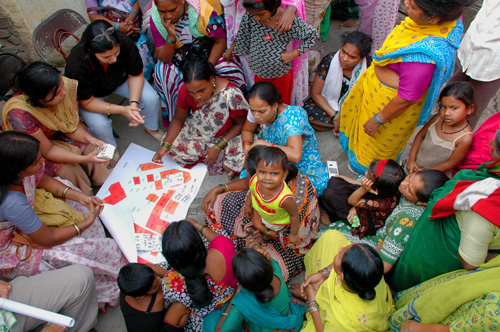
Cities don’t make people poor; they attract poor people. The flow of less advantaged people into cities from Rio to Rotterdam demonstrates urban strength, not weakness.” Edward Glaeser, Triumph of the City
The first exhibition in this series, Design for the Other 90%, sparked an international dialogue about how design could improve the lives of poor and marginalized communities around the world. Professional designers traditionally focused on 10% of the world’s population, but that has dramatically changed in this new millennium. This new wave of designers are working in co-creation with people with limited resources, collaborating cross-sector to find appropriate affordable solutions, utilizing emerging technology that bypasses 20th century technology “leapfrogging’ poorer communities into the 21st century. Design with the Other 90%: CITIES is the second in a series of themed exhibitions that demonstrate how design can address the world’s most critical issues. For the first time more of us are living in cities than ever before, this is an historic shift in civilization. This massive urban migration into crowded, unhealthy informal settlements (commonly referred to as slums) is the leading challenge of this century pushing beyond the capacity of many local institutions to cope. Driven by economics and globalization, coupled with a rising waters and desertification around the globe, it requires new strategies and structures that encompass environmental, spatial, social, economic and culturally specific approaches. The CITIES exhibition was conceived to broaden exchanges of knowledge between the people living in our growing cities in Global Majority Countries such as Chile, Bangladesh and Kenya, architects, engineers, designers, planners, policy-makers, non-governmental and funding organizations to generate healthier, inclusive cities. Placing people at the center of the solution is paramount to gaining the required insight to meet this challenge. Innovative urban solutions are the result of including the community in a participatory approach to planning and urban design. The advent of south-to-south exchanges between poor urban communities, local knowledge sharing between the slum dwellers and professional designers and increased discourse flowing south to north are changing the dynamic at both local and international levels. The Design with the Other 90%: CITIES exhibition opens at the United Nations, in partnership with the UN’s Academic Impact global initiative, on October 15, 2011 running through January 9, 2012. Projects and products at every scale will be included in the 5,000 square foot exhibition, with a focus on designs that are informed by settlement communities: alternative housing design, methods and materials; low-cost clean water; accessible education initiatives; sanitation and solid-waste management; transportation solutions; innovative systems and infrastructure; and urban design and planning.
One thought on “Design with the Other 90%: CITIES”
RImi Oliveira on January 5, 2020 at 10:01 am
Dear Sirs,
My name is Rimi Oliveira.
I am from Brazil and by watching the smithsonian channel, I saw a project under the ‘Design for the other 90%’ ( I think it was under this tag) where big plastic bags were used to cultivate plant ( I think it was kale ) to provide food for the less provided population in a country in Africa.
Is it possible to know the name of the project and more details about it ?
Thank you in advance,
Rimi Oliveira